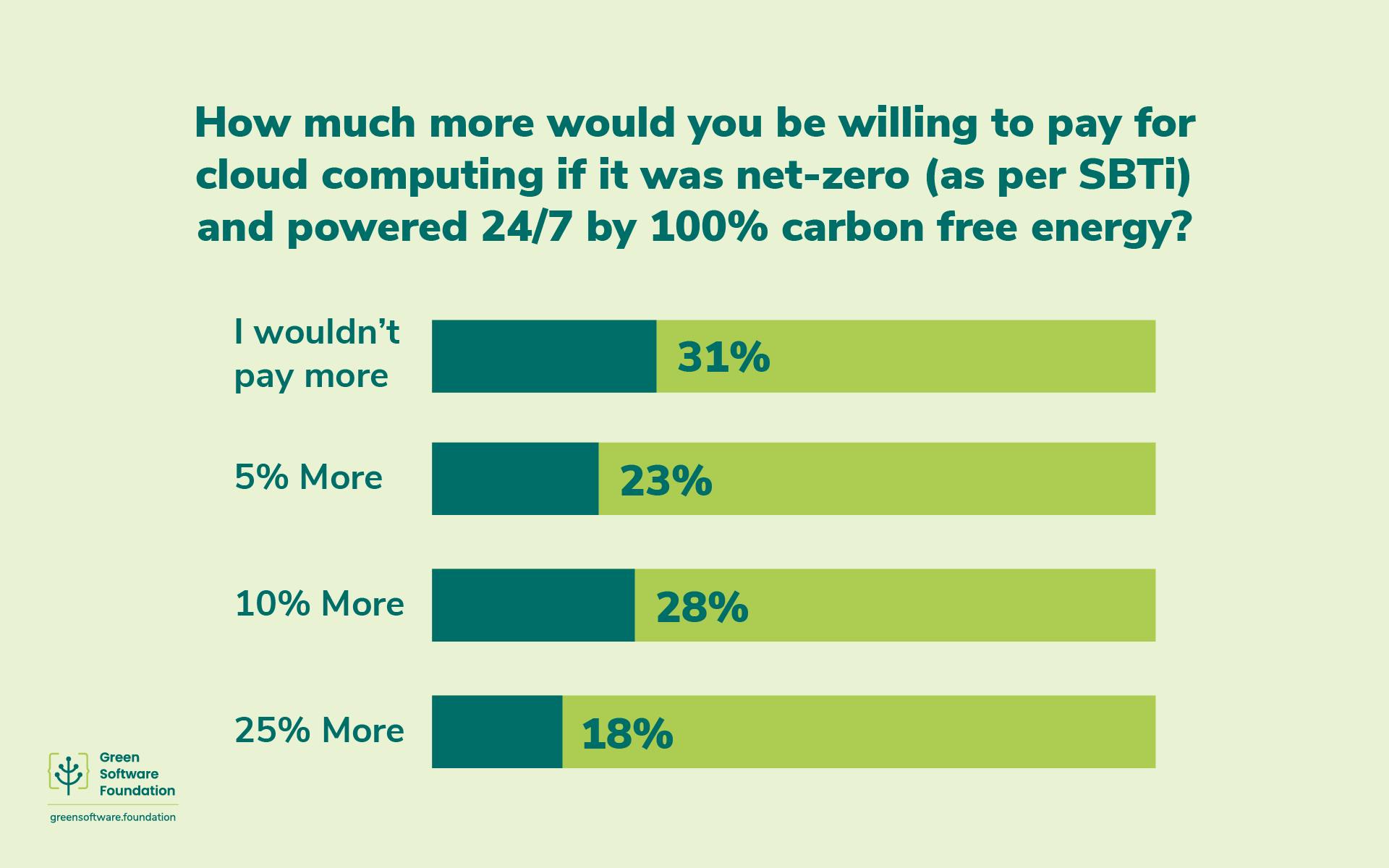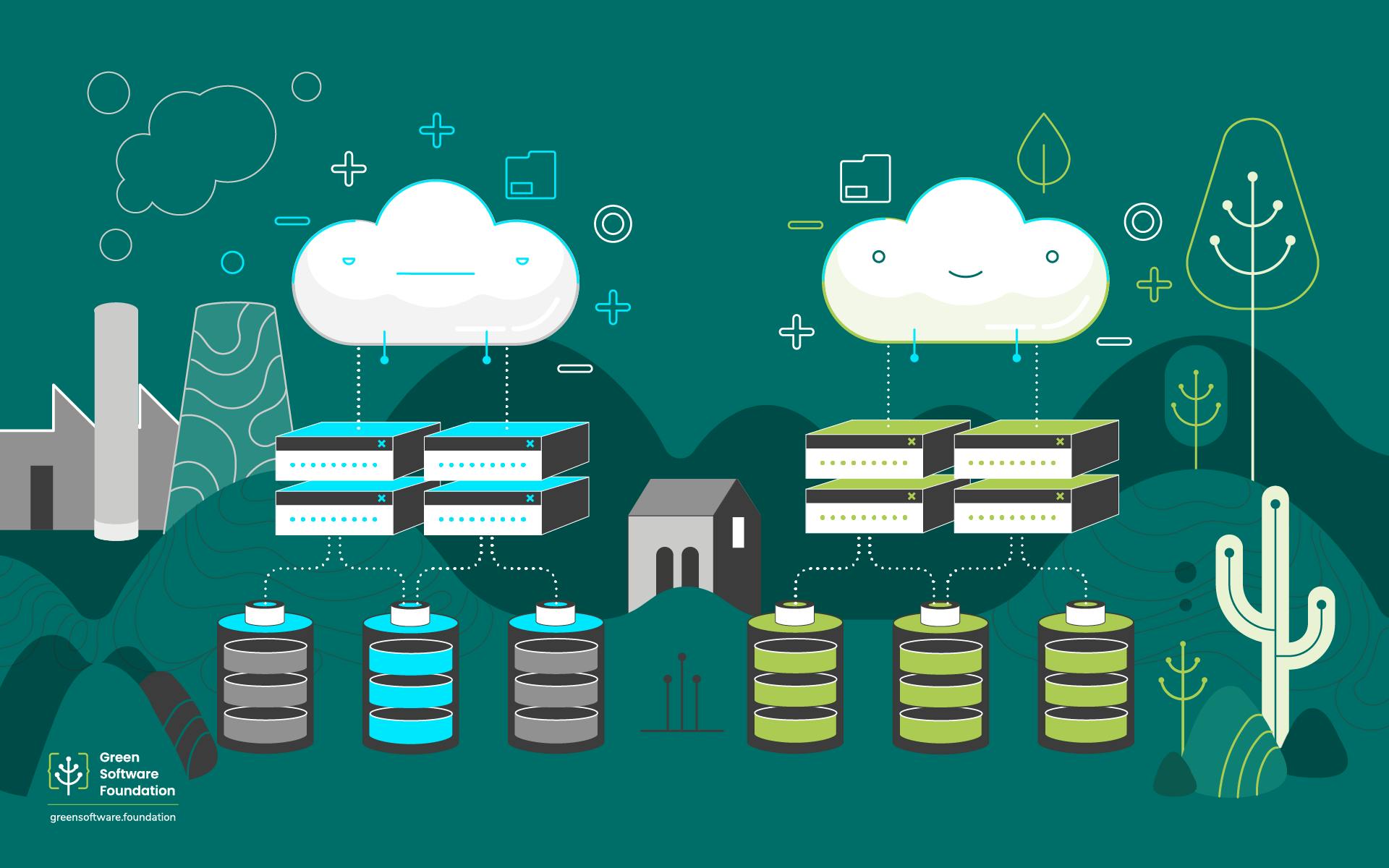The cloud already emits more global GHG emissions than the commercial airline industry, surpassing emissions of over 22.2 million flights annually.
According to a recent poll conducted by Asim Hussain, the Executive Director of the Green Software Foundation, 72% of software practitioners would be willing to pay more for cloud computing services that are Net-Zero and powered by 100% carbon-free energy (CFE). Specifically, 23% said they would pay 5% more, 28% would pay 10% more, and 18% would pay 25% more.

Similar to these findings, an extensive IBM survey in 2021 found that 50% of consumers said they would pay a premium for a sustainable brand or product. In a following market survey, 95% of IT professionals said their companies would pay an average premium of around 6% for products or services from an ESG-committed supplier.
So, is there a strong business case for cloud providers to be Net Zero and powered by clean energy? Signs are pointing in that direction. By transitioning to this greener model, companies can reduce their carbon footprint and expand their serviceable market. Tapping into the growing demand for sustainable solutions is also likely to reflect corporate commitments to climate goals better and help companies achieve greater competitive advantage over competitors not taking steps to curtail their carbon energy use dramatically.
Despite the pull to being Net Zero and powered 100% by CFE, this green transition comes with challenges. One barrier to moving to 100% CFE is that renewable energy sources can be less reliable. Unlike burning coal and gas, renewables are not dispatchable. They produce energy when the wind blows or the sun shines. When those climate activities do not occur, there is no energy production.
The foundation offers a range of resources and tools, including the Software Carbon Intensity (SCI) Specification and the Carbon Aware SDK to help measure the carbon intensity of software and build applications and systems that enables software to do more when electricity is clean and less when it's dirty. Carbon Aware Computing, especially, is an approach that can help organisations achieve their 24/7 Hourly Matching CFE targets.
The business case for a green cloud will only strengthen, and the potential benefits to the environment and a company’s bottom line demand that every software practitioner continue exploring ways to protect our planet while driving innovation and growth. Cloud giants Google and Microsoft have committed to reaching 100% CFE. We’re here to help more software companies make similar commitments and overcome barriers interfering with a successful, wide-scale, green software transition.
This article is licenced under Creative Commons (CC BY 4.0)
